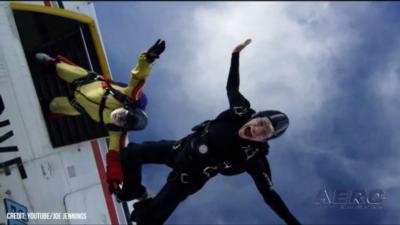Mon, Nov 11, 2024
Agency Cites Limited Resources and a Lack of Safety Concern
The FAA recently and inexplicably rejected a request from the Parachute Industry Association (PIA) Rigging Committee aimed at changing the rules for foreign skydivers visiting the United States with their own gear. This would have simplified the unnecessarily strict regulations for repacking chutes.

The petition targeted 14 CFR 105.49, which allows foreign parachutists to jump under their home country’s regulations. However, this is limited in the FAA’s description of a foreign parachutist: “a parachutist who is neither a U.S. citizen or a resident alien and is participating in parachute operations within the United States using parachute equipment not manufactured in the United States.”
This definition means that, to comply with FAA regulations, international jumpers must have gear approved under FAA technical standard order C-23 (TSO’d) repacked by an FAA-certified rigger before using it in US borders.
The effort to revise the rule began in March 2023 at the PIA Symposium. Initially, they aimed for an exemption for Canadian jumpers crossing the US border, with the long-term goal of extending this exemption to other countries. In response, the FAA suggested the submission of a formal petition for rule changes to 14 CFR 105.49, which governs foreign parachutists' use of equipment in the U.S.

Despite this initial suggestion, the FAA sent a letter stating that it would not move forward with the request. The agency cited resource limitations, other higher-priority concerns, and a lack of safety issues with the current rule as reasons for the decision.
In response to the FAA’s decision, the PIA plans to publish a list of FAA-certified riggers operating in other countries. This hopes to assist international jumpers in preparing for their US trips. Additionally, PIA intends to encourage rigging schools to offer courses that streamline the certification process for foreign riggers who meet the FAA’s English proficiency requirements, ultimately aiming to expand the pool of available FAA-certified riggers outside the US.
More News
From 2023 (YouTube Edition): "Ain’t Your Daddy’s Super Cub”—Don Wade Co-owned by Don and Ron Wade—the former of Don’s Dream Machines, a storied >[...]
Pilot-Rated Passenger Reported That The Pilot Did Not Adequately “Round Out” The Landing Flare And The Airplane Bounced And Yawed To The Right Analysis: The pilot state>[...]
Dead Reckoning Dead reckoning, as applied to flying, is the navigation of an airplane solely by means of computations based on airspeed, course, heading, wind direction, and speed,>[...]
Aero Linx: Lake Amphibian Club This website is created and sponsored by the Lake Amphibian Club, to help spread the word about these wonderful, versatile amphibians that can land j>[...]
“I am deeply honored to be sworn in as NASA administrator. NASA’s mission is as imperative and urgent as ever — to push the boundaries of human exploration, ignit>[...]
 Classic Aero-TV: In Praise of Alabamas Patriot Aircraft USA
Classic Aero-TV: In Praise of Alabamas Patriot Aircraft USA NTSB Final Report: Cirrus Design Corp SR22
NTSB Final Report: Cirrus Design Corp SR22 ANN's Daily Aero-Term (12.21.25): Dead Reckoning
ANN's Daily Aero-Term (12.21.25): Dead Reckoning ANN's Daily Aero-Linx (12.21.25)
ANN's Daily Aero-Linx (12.21.25) Aero-News: Quote of the Day (12.21.25)
Aero-News: Quote of the Day (12.21.25)




